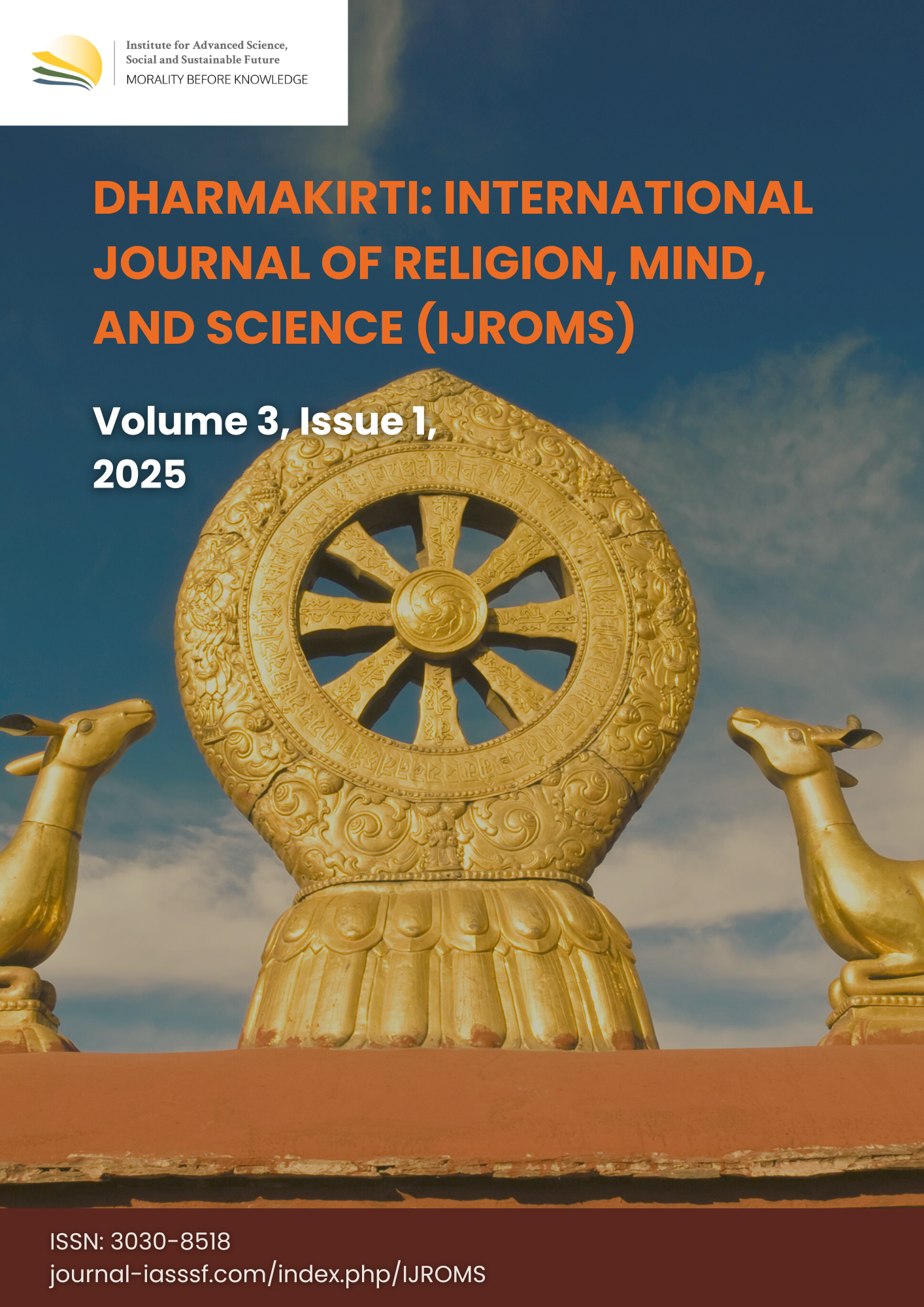Transformative coping and spirituality: The case of the Kakure Kirishitan during the Tokugawa period
DOI:
https://doi.org/10.61511/ijroms.v3i1.2025.2221Keywords:
Kakure Kirishitan, transformative coping, religious persecution, spiritualityAbstract
Background: This study explores the historical experiences and psychological resilience of the Kakure Kirishitan (Hidden Christians) during the Tokugawa period of Japan, focusing on their coping strategies during religious persecution. The research aims to (1) understand the nature and impact of the Tokugawa regime’s suppression of Christianity and (2) analyse how the Kakure Kirishitan cope with the stress of oppression to preserve their faith by using the Transformative Coping Model (TCM). Methods: This study applies qualitative historical analysis by synthesising scholarly literature, primary accounts, and theoretical perspectives, especially those related to stress-coping, spirituality, and resilience. The geographical and historical focus is Japan between the 17th and 19th centuries, during which Christianity was outlawed. Findings: Findings reveal that the Kakure Kirishitan employed various creative and spiritual coping mechanisms, including religious syncretism, oral transmission, symbolic secrecy, and ritual innovation. These strategies allowed them to maintain both their religious identity and communal cohesion in secret. Their use of encoded rituals and adapted theology illustrates how adversity was transformed into spiritual growth and cultural preservation. Despite psychological burdens such as fear and trauma, the Kakure Kirishitan interpreted suffering as divine testing, reinforcing their endurance across generations. Conclusion: This study concludes that the Kakure Kirishitan’s survival reflects the core principles of transformative coping—meaning-making, creativity, and collective resilience—as they shaped a unique spiritual identity under prolonged oppression. Novelty/Originality of this article: This study offers a novel contribution by linking the historical experience of the Kakure Kirishitan with the Transformative Coping Model (TCM), a framework rarely applied in historical religious studies.
References
Anesaki. (1938). Prosecution of Kirishitans after the Shimabara Insurrection. Mon. Nip., 1, 293-300.
Boscaro, A. (1973). Toyotomi Hideyoshi and the 1587 edicts against Christianity.” Oriens Extremus, 20(2), 219–241.
Boxer, C. R. (1951). The Christian Century in Japan. Oakland, CA: University of California Press.
Corry, D. A. S., Lewis, C. A., & Mallett, J. (2014). Harnessing the mental health benefits of the creativity–spirituality construct: Introducing the theory of transformative coping. Journal of Spirituality in Mental Health, 16(2), 89–110. https://doi.org/10.1080/19349637.2014.896854
Corry, D. A. S., Mallett, J., Lewis, C. A., & Abdel-Khalek, A. M. (2013). The creativity-spirituality construct and its role in transformative coping. Mental Health, Religion & Culture, 16(10), 979–990. https://doi.org/10.1080/13674676.2013.834492
Corry, D. A. S., Tracey, A. P., & Lewis, C. A. (2015). Spirituality and creativity in coping, their association and transformative effect: A qualitative enquiry. Religions, 6(2), 1–15. https://doi.org/10.3390/rel6020499
Endo, Shusaku. (2016). Silence. First published as Chinmoku in Japanese by Mpnumenta Nipponica in 1969. Picador.
Hagemann, E. (1942). The persecution of the Christians in Japan in the middle of the seventeenth century. Pacific Historical Review, 11(2), 151-160.
Harding, C. (2023, November). Christianity’s bloody history in Japan. History Today, 73(11). https://www.historytoday.com/archive/feature/christianitys-bloody-history-japan
Harrington, A. M. (1980). “The Kakure Kirishitan and Their Place in Japan's Religious Tradition.” Japanese Journal of Religious Studies, 7 (4), 318-336. https://www.jstor.org/stable/30233252
Johnson, K. D., Rao, H., Wintering, N., Dhillon, N., Hu, S., Zhu, S., Korczykowski, M., Johnson, K., & Newberg, A. B. (2014). Pilot study of the effect of religious symbols on brain function: Association with measures of religiosity. Spirituality in Clinical Practice, 1(2), 82–98. https://doi.org/10.1037/scp0000015
Leira, C., Lee, F., Smith, J., Quin, J., & Maul, J. (2023). Using religious symbols and religious teachings to cope during times of adversity. International Journal of Social Science and Humanity, 13(6), 390-399. https://doi.org/10.18178/ijssh.2023.13.6.1176
Nagasaki Prefectural Culture Advancement and World Heritage Division. (2018). Introduction to the Hidden Christians. Hidden Christian Sites in the Nagasaki Region Web Site. https://kirishitan.jp/values_en/val002.
Nippon Communications Foundation. (2015, August 25). Saint Francis Xavier and the roots of Christianity in Japan. Nippon.com. https://www.nippon.com/en/features/c02303/
Nippon.com. (2019). A timeline of Christianity in Japan. Nippon.com. https://www.nippon.com/en/japan-data/h00597/a-timeline-of-christianity-in-japan.html
Nosco, P. (1993). Secrecy and the Transmission of Tradition: Issues in the Study of the ‘Underground’ Christians. Japanese Journal of Religious Studies, 20(1), 3-29. https://www.jstor.org/stable/30234129
Nosco, P. (2007). The Experiences of Christians during the Underground Years and Thereafter. Japanese Journal of Religious Studies, 34(1), 85-97. https://www.jstor.org/stable/30234176
Screech, Timon. (2012). The English and the Control of Christianity in the Early Edo Period. Japan Review, 24, 3-40. https://www.jstor.org/stable/41592686
Spae, J. J. (1963). The Catholic Church in Japan. Contemporary Religions in Japan, 4(1), 3–43, 45–78. Nanzan University. https://www.jstor.org/stable/30232899
Taida, Ichiro. (2020). Francisco Xavier’s activities regarding the Japanese Language. Acta Missiologica, 1(14), 7-19. https://www.actamissiologica.com/sub/am_1,2020.pdf
Whelan, C. (1992). Religion Concealed: The Kakure Kirishitan on Narushima. Monumenta Niponica, 47(3), 369-387. https://www.jstor.org/stable/2385104
Downloads
Published
How to Cite
Issue
Section
Citation Check
License
Copyright (c) 2025 Chong Xannon, Dr. Kaori Kimura, Siaw Fung Chong

This work is licensed under a Creative Commons Attribution 4.0 International License.















